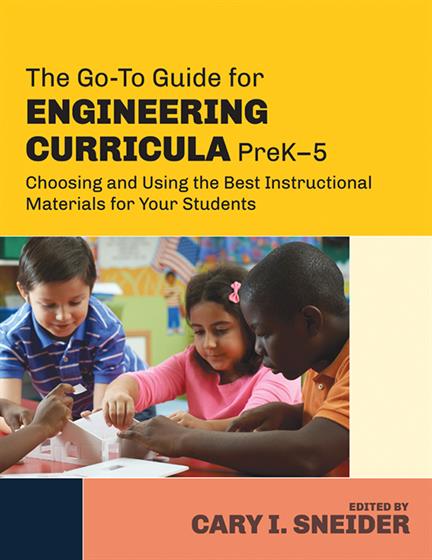Quote by Page Keeley, Author, Speaker, and Science Education Consultant: "
With engineering getting increased attention in the elementary science curriculum, this book is a tremendous resource for districts seeking high quality curricula that connect engineering with science and support the integrated nature of STEM learning both inside and outside of the school day.
High quality curricula is the linchpin of effective teaching and learning. With the prominence of elementary engineering in the NGSS and revisions to state standards, elementary teachers and curriculum specialists will find this book of tremendous value in selecting curricula that integrate engineering and science. From an overview of the importance of engineering in the elementary grades to vivid descriptions of a variety of PreK-5 curricular resources, this book provides the information educators need to make sound curricular decisions that support the development of engineering concepts and practices.
Elementary schools are faced with the exciting challenge of moving from science programs to STEM-related programs. Selection of high quality curricula is a key part of meeting this challenge. This book provides descriptions of well-designed school and out of school instructional materials as well as the background for understanding the critical and timely importance of including engineering in the PreK-5 science curriculum.
Knowledge and confidence to teach engineering in the elementary science curriculum comes with access to high quality instructional materials. Without question, this book provides the information teachers and curriculum specialists need to make well-informed decisions that will give students the opportunity to use the engineering design process to both apply and develop their knowledge of science. With elementary engineering in the STEM spotlight, this book is timely and much needed!"
"
With engineering getting increased attention in the elementary science curriculum, this book is a tremendous resource for districts seeking high quality curricula that connect engineering with science and support the integrated nature of STEM learning both inside and outside of the school day.
High quality curricula is the linchpin of effective teaching and learning. With the prominence of elementary engineering in the NGSS and revisions to state standards, elementary teachers and curriculum specialists will find this book of tremendous value in selecting curricula that integrate engineering and science. From an overview of the importance of engineering in the elementary grades to vivid descriptions of a variety of PreK-5 curricular resources, this book provides the information educators need to make sound curricular decisions that support the development of engineering concepts and practices.
Elementary schools are faced with the exciting challenge of moving from science programs to STEM-related programs. Selection of high quality curricula is a key part of meeting this challenge. This book provides descriptions of well-designed school and out of school instructional materials as well as the background for understanding the critical and timely importance of including engineering in the PreK-5 science curriculum.
Knowledge and confidence to teach engineering in the elementary science curriculum comes with access to high quality instructional materials. Without question, this book provides the information teachers and curriculum specialists need to make well-informed decisions that will give students the opportunity to use the engineering design process to both apply and develop their knowledge of science. With elementary engineering in the STEM spotlight, this book is timely and much needed!"
Page Keeley, Author, Speaker, and Science Education Consultant



